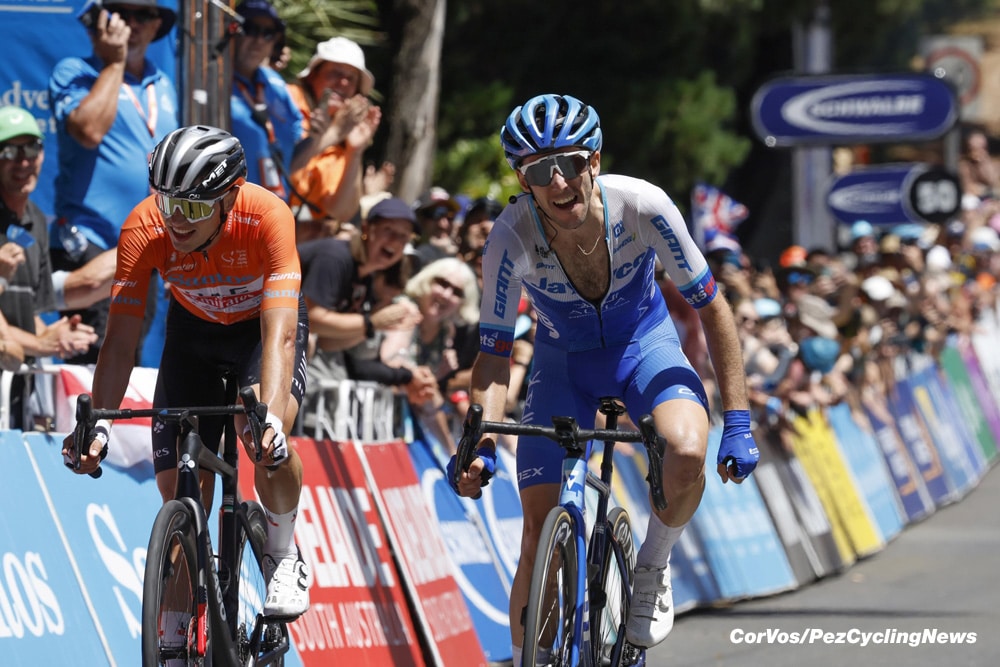Cyclo-cross (otherwise known simply as ‘cross or CX) is growing in popularity in the UK as more and more roadies and mountain bikers look for a fun way to carry on their two-wheeled pursuits deep into the depths of winter. But how does a cyclo-cross race actually work? And how does it differ from, say, a road, gravel or XC race?
1. It’s raced on drop bar bikes
Although they may look like a road bike, CX bikes have subtle differences
© Charlie Crowhurst / Red Bull Content Pool
It may sound odd, but this predominantly off-road pursuit is raced solely on two-wheeled machines that look a lot like road bikes. You might be thinking ‘But road bikes are for, well, the road, and mountain bikes are for everything else?’, and you’d be half right. That’s because the bikes used for cyclo-cross aren’t out-and-out road bikes – in fact, they have some features usually found on MTBs.
The most notable difference between a CX and road bike is the amount of clearance around the wheels. By having greater space between the fork’s blades and in the frame’s rear triangle (the area comprising the seat tube, chain stays and seat stays), there’s more room for the wheels to carry on spinning without getting clogged up by mud and sand. This extra space, when compared to a road bike, also allows riders to run wider tyres (up to the regulation 33c) that tend to be similar in tread design to ones you’d find on a mountain bike. The frame is also slightly slacker, to allow for greater bike handling, while the bottom bracket is further from the ground to help avoid obstacles (both natural and artificial).
2. The course is a circuit
Unlike say a sportive, gran fondo or traditional XC race, a cyclocross race is completed on a closed circuit. Similar to road-based crit racing or off-road XCO (Cross Country Olympics), participants generally have to race for a certain duration plus one final lap (rather than number of laps) with the winner the first to cross the line. Most elite races last for an hour, while amateur events can either be for a predetermined number of laps or for a duration of 30-60 minutes.
The course itself can vary between 1km-4km in length and often includes a variety of different terrain – be it long grass, grit, mud, sand or snow (or a combination). And with the contrasting terrain come the technical hazards of racing off-road…
3. There are lots of different obstacles to tackle
As well as riding, you can expect to push, carry and shoulder your bike
© Charlie Crowhurst / Red Bull Content Pool
Roots, rocks, ruts… These are just a handful of things you’ll need to avoid or ride over when competing in a CX race. Unlike a road race, where the smoother the asphalt the better, in ‘cross you have to deal with whatever the natural terrain throws at you. And that’s before you get to the iconic obstacles added by the course designer.
The most common features found in cyclo-cross include barriers (wooden planks standing around 45cm high) that competitors either have to carry their bike over or (if particularly skilled) bunny hop, run-ups (hills that are too steep to cycle up), steps (where you have to dismount and shoulder your bike to the top) and tight, twisting, technical chicanes. All require great bike handling skills and the ability to smoothly dismount and remount your bike a number of times per lap is a bonus.
4. The racing is all out from the off
A cyclo-cross race has a start line and competitors set off on their race from the drop of the flag – so far, so normal for a bike race. What happens next is only really comparable with XCO races and a million miles from the sedate roll out of a road bike race, as participants race their way to the first corner to make sure they get a good placing to build on for the rest of the race.
Remain too far towards the back and you can expect to get caught in a jam as riders try to pass through a narrow section of course, and therefore have a lot more to do to catch the front of the race. Go off too fast though, and you might pay the price further into the race.
5. It’s not as team-based as other disciplines
The winner in CX is generally the strongest individual rider
© Kristof Ramon / Red Bull Content Pool
While Tour de France winners rely on their teammates for a whole host of things – from bringing them water and food to pacing them back onto the peloton if they get dropped to upping the tempo ahead of an attack – cyclo-cross races tend to be less team-based. As the racing is slower, there isn’t the same aerodynamic benefit from riding on the wheel of the rider in front, and it’s more to do with bike handling abilities and raw power. But that’s not to say that there aren’t some dark arts you can engage in either with a team or on your own.
On narrow areas or singletrack sections of the course, you can slow down, allowing a teammate in front to make a break from the group you’re in. Alternatively, if you’re riding solo, it’s possible to block competitors passing on obstacles and technical areas if you think they are faster than you on that particular segment.







